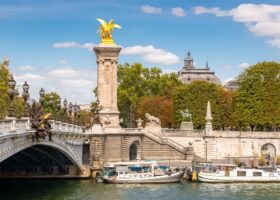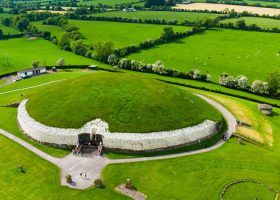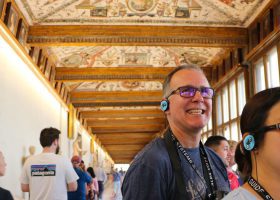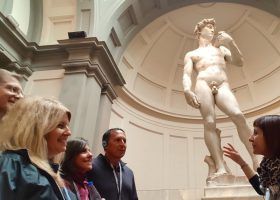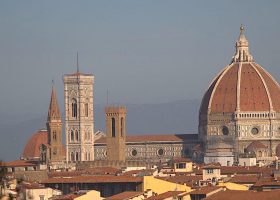Florence is where art, history, and daily life meet in one of Europe’s most beautiful cities. The birthplace of the Renaissance may be small, but it’s packed with iconic landmarks, world-class museums, lively piazzas, and hidden gems. If you’re planning your first trip, or want to make sure you see the best attractions in Florence, this guide covers it all. From Brunelleschi’s Dome to quiet gardens in the Oltrarno, here are the top things to see in Florence.
Top Landmarks to See in Florence
Duomo & Brunelleschi’s Dome
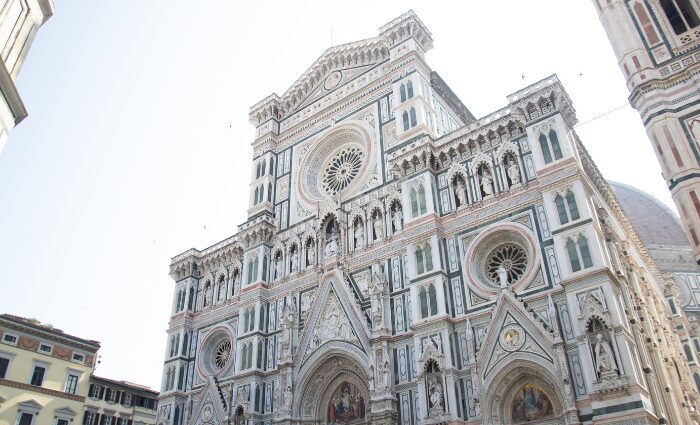
- Why Go: Florence’s most famous landmark and a Renaissance engineering marvel.
- Don’t Miss: Climbing the dome for panoramic views and to see frescoes up close.
- Hours: Daily 8:15 am – 7:30 pm (varies by section)
- Admission: ~€30 combined ticket for dome, bell tower, and museum
Florence’s cathedral, Santa Maria del Fiore, is one of the top attractions in Florence and an engineering marvel that changed the skyline forever. When Filippo Brunelleschi built its dome in the 15th century, it was the largest since the Roman Pantheon—and no one was sure it could even be done.
This is also where Florentine history turned deadly: in 1478, the Pazzi Conspiracy struck during Easter Mass, assassinating Giuliano de’ Medici beneath the cathedral’s soaring frescoes.
Learn more: How to Visit the Florence Duomo
Ponte Vecchio
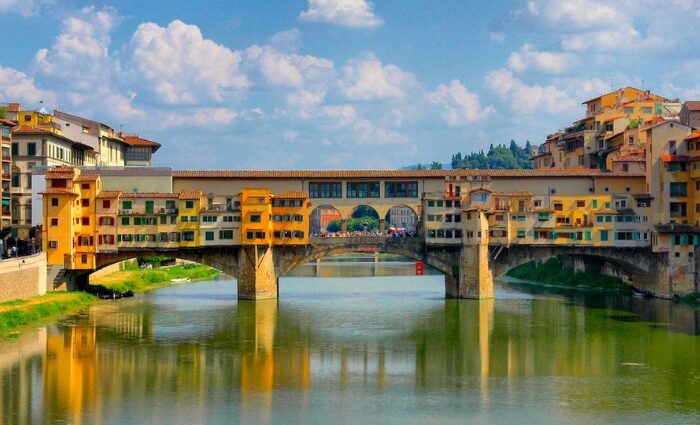
- Why Go: Florence’s oldest and most photogenic bridge.
- Best Time: Sunrise for quiet photos, sunset for golden light.
- Admission: Free
Since the Middle Ages, the Ponte Vecchio has carried Florentines across the Arno. In its earliest days, the bridge was packed with butcher stalls, but the Medici judged them too down-market for their shining city. By 1595 they had evicted the butchers and installed jewelers and goldsmiths, transforming the bridge into a glittering showcase worthy of Florence’s fame.
Above the storefronts runs the Vasari Corridor, a concealed walkway that links Palazzo Vecchio with Palazzo Pitti and allowed the Medici to move from their residence to the seat of government without being seen.
Piazza della Signoria & Palazzo Vecchio
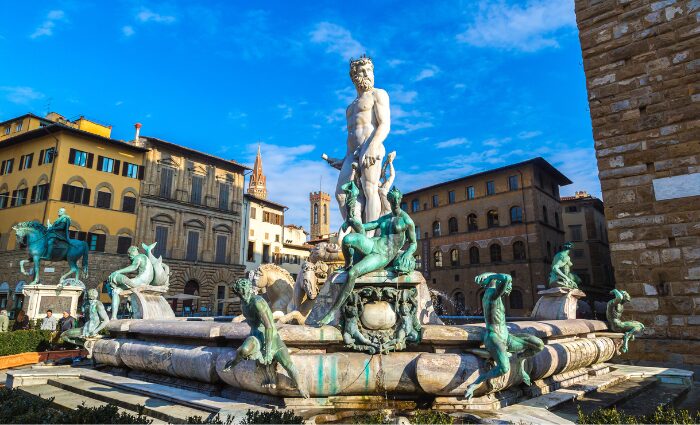
- Why Go: Florence’s political heart filled with statues and open-air art.
- Highlights: Loggia dei Lanzi, Neptune Fountain, copy of Michelangelo’s David
- Admission: Free to walk; Palazzo Vecchio museum entry €12
This square, one of the top attractions in Florence, has been the heart of Florentine power since the 1200s. It hosted republican meetings, Medici celebrations, and executions, including that of Girolamo Savonarola in 1498.
Around the piazza:
- Loggia dei Lanzi – an open-air gallery with Renaissance sculptures
- Equestrian Statue of Cosimo I de’ Medici – the duke who turned Florence into a duchy
- Fountain of Neptune – marking Florence’s maritime ambitions
- Palazzo Vecchio – the “Old Palace” and still the seat of city government
Step inside to see frescoed council chambers, or combine your visit with a Uffizi tour next door.
Piazzale Michelangelo
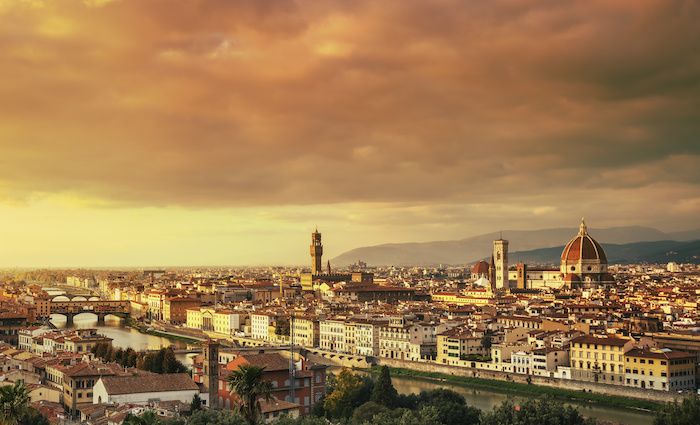
- Why Go: The postcard view of Florence and its famous Duomo skyline.
- Best Time: Sunset with a gelato or bottle of wine.
- Admission: Free
Built in 1869 during Florence’s brief time as the capital of Italy, this terrace is famed for its uninterrupted city views, complete with the Arno and the Duomo. A bronze replica of Michelangelo’s David keeps watch at the center. Bring a gelato or a picnic and linger until the sun goes down.
Top Florence Hotels
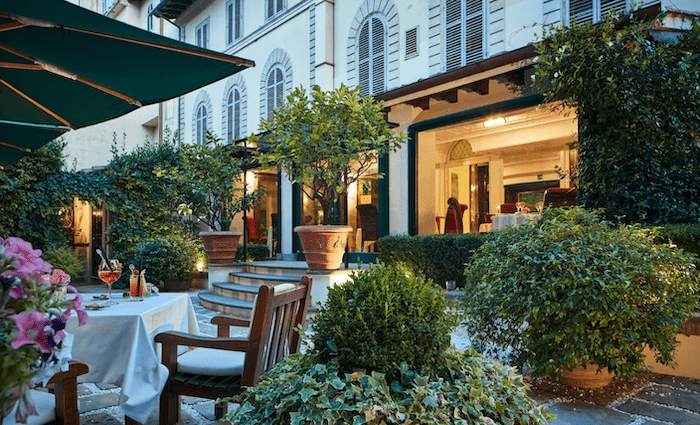
Hotel Regency ⭐⭐⭐⭐⭐
Garden Space • Quiet Luxury • Family-Friendly
Perfect for travelers with kids or anyone seeking a slower pace, the Regency is a refined oasis just outside the main tourist zone.
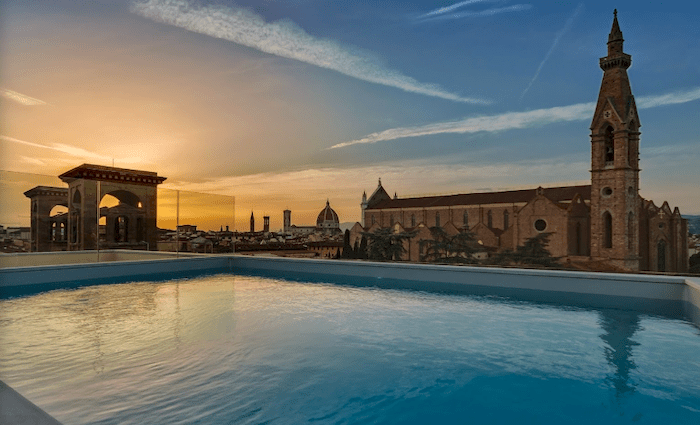
Plaza Hotel Lucchesi ⭐⭐⭐⭐
Rooftop Pool • River Views • Classic Charm
A local favorite for warm-weather stays, Lucchesi combines traditional flair with one of Florence’s best rooftop pool scenes.
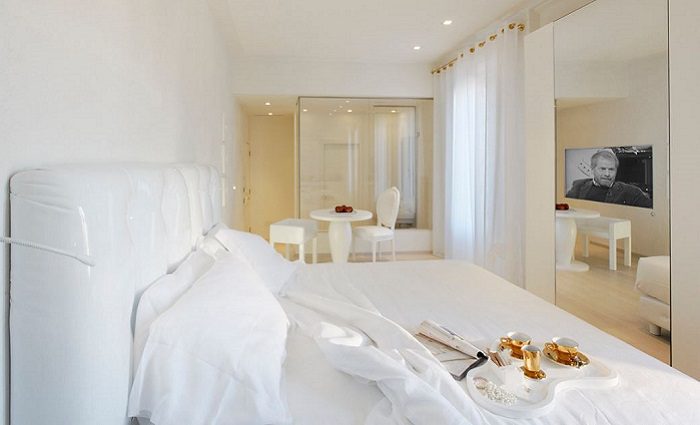
Eurostars Florence Boutique ⭐⭐⭐⭐
Modern Design • Rooftop Terrace • Quiet Area
A little removed from the crowds in a good way, it’s a stylish escape with breezy balconies and a restful vibe.
Top Museums and Art to See in Florence
Uffizi Gallery

- Why Go: Home to the world’s greatest collection of Renaissance art.
- Hours: Tue–Sun 8:15 am – 6:30 pm
- Admission: €29 (Mar–Oct), €23 (Nov–Feb)
The Uffizi Gallery is one of the top things to see in Florence, a must‑see museum, and one of the best places on Earth to experience Italian Renaissance art. It started as a Medici office building in the 1500s and became a public museum in 1865. These days, it welcomes more than 4 million visitors a year, making it the most popular ticketed site in Florence.
Why the crowds? Because Florence was the heart of the Renaissance, and the Uffizi is where so much of that history now lives.
Here, you can come face to face with:
- Botticelli’s Birth of Venus and La Primavera
- Caravaggio’s dramatic Medusa
- Works by the giants—Leonardo, Raphael, and Michelangelo
This is one spot where booking a tour really helps you make the most of what you’re seeing.
Learn more: How to Visit the Uffizi Gallery
Michelangelo’s David at the Accademia
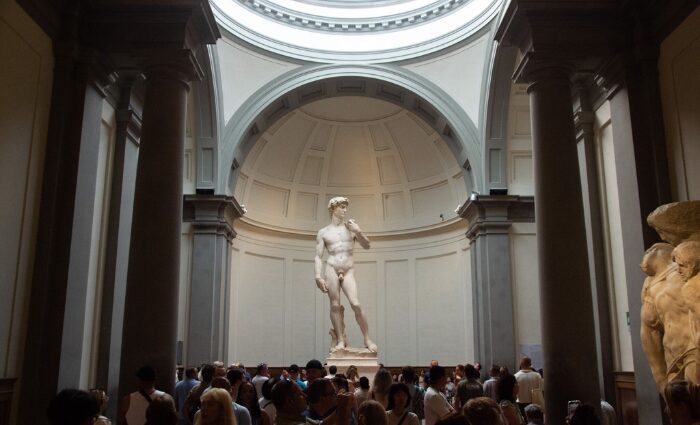
- Why Go: Stand before the most famous statue in the world.
- Don’t Miss: Michelangelo’s unfinished “Prisoners” sculptures leading to David.
- Hours: Tue–Sun 8:15 am – 6:50 pm
- Admission: €16 + €4 online fee
The Galleria dell’Accademia di Firenze is best known for one thing: Michelangelo’s David. Which he carved from a single block of marble that had been deemed unusable by other artists. And not only did Michelangelo work with it, he turned it into what many consider his greatest sculpture.
As you approach the statue, you’ll also see four unfinished works by Michelangelo lining the corridor. The museum also features pieces by other Renaissance artists like Sandro Botticelli. Tickets can be hard to come by, but our Florence walking tour includes a guided visit to the Accademia and other top sites with a local English-speaking expert.
Learn more: How to Visit the Accademia Gallery
Bargello Palace
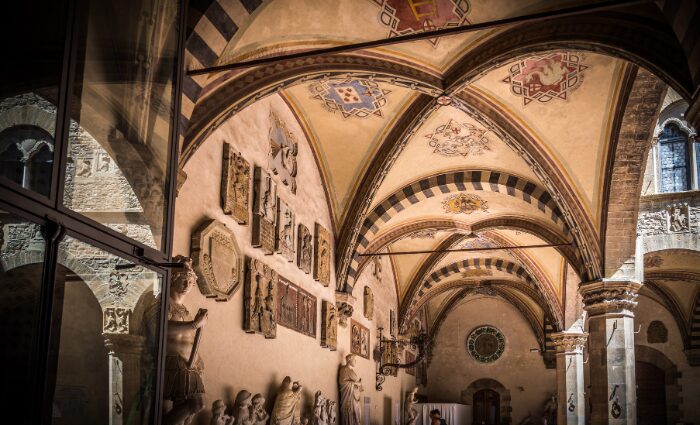
- Why Go: A medieval fortress turned world-class sculpture museum.
- Don’t Miss: Donatello’s David and Michelangelo’s Bacchus.
- Hours: Mon & Wed–Sat 8:15 am – 6:50 pm; Sun 8:15 am – 1:50 pm
- Admission: €10 + €3 booking fee
The Bargello is one of Florence’s most dramatic buildings. Completed in 1255, it first served as the seat of the city’s magistrates, later evolving into the headquarters for the city police and a grim prison. Executions were once carried out in its courtyard, and the building’s rough stone exterior still echoes its medieval function.
Inside, the story changes from politics to artistry. The National Museum of the Bargello now holds the world’s most important collection of Italian Renaissance sculpture, from Donatello’s pioneering works to Michelangelo’s muscular marble creations. Add in Verrocchio, Giambologna, and the Della Robbia family, and the palace transforms into a who’s who of Florence’s sculptural legacy.
San Marco Museum
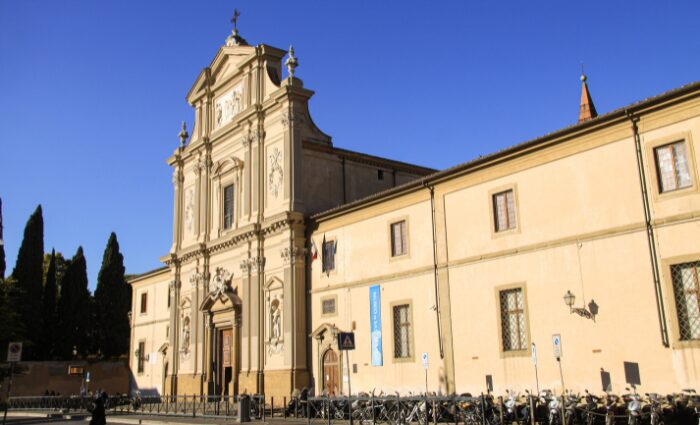
- Why Go: A rare chance to see Renaissance art in the exact place it was created for.
- Don’t Miss: The monks’ frescoed cells and Savonarola’s rooms.
- Hours: Daily 8:15 am – 1:20 pm
- Admission: €8 + €3 booking fee
While Florence’s cathedrals and galleries dazzle with grandeur, San Marco offers a much more intimate experience. This former Dominican convent, rebuilt in the 1430s with Medici funding, was designed to be a haven for reflection. Each monk’s cell holds a Fra Angelico fresco, painted not for crowds, but for solitary prayer.
Beyond the art, history lingers in these halls. The infamous preacher Savonarola once walked these corridors, the same man whose sermons shook Florence and led to the Bonfire of the Vanities.
Orsanmichele
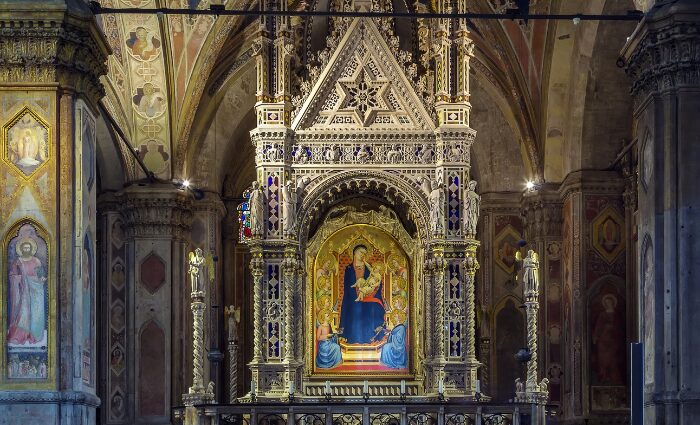
- Why Go: A church, grain market, and sculpture gallery in one building.
- Don’t Miss: Orcagna’s tabernacle and the original guild statues upstairs.
- Hours: Mon, Wed–Sat 8:30 am – 6:30 pm; Sun 8:30 am – 1:30 pm
- Admission: €8 + €3 booking fee
Orsanmichele is a building with two lives. In the 13th century, it was Florence’s grain market, a place where wheat was stored to prevent famine and ensure the city’s survival. By the 14th century, its role expanded beyond commerce. A fresco of the Virgin Mary inside gained a reputation for performing miracles, drawing merchants and townspeople to pause their business and offer prayers for prosperity and protection. That unique mix of trade and faith makes Orsanmichele one of Florence’s most fascinating landmarks.
Top Florence Tours

Florence Walking Tour with Statue of David
2 Hours • €
Uncover the best of Florence at the Duomo and Ponte Vecchio, and skip the line at Accademia.
Book Now!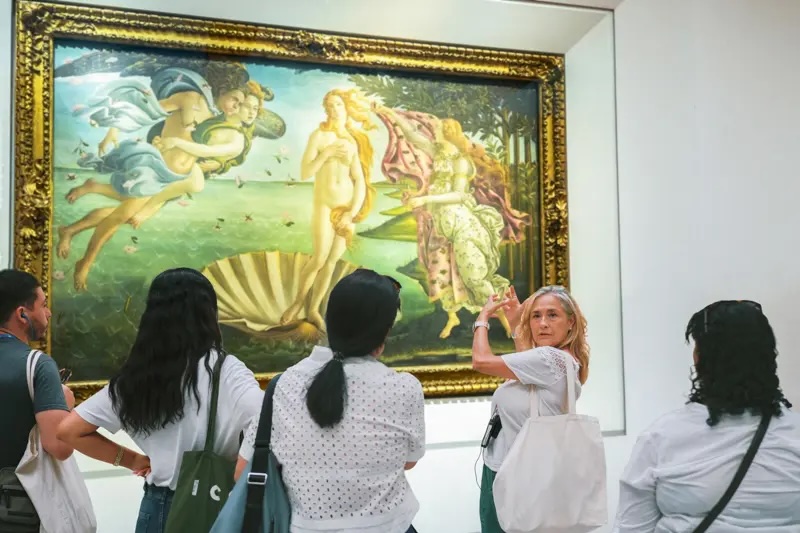
Skip the Line Uffizi Gallery Tour
2 Hours • €€
See Botticelli, Caravaggio, and Michelangelo’s masterpieces in Florence’s famous Uffizi Gallery.
Book Now!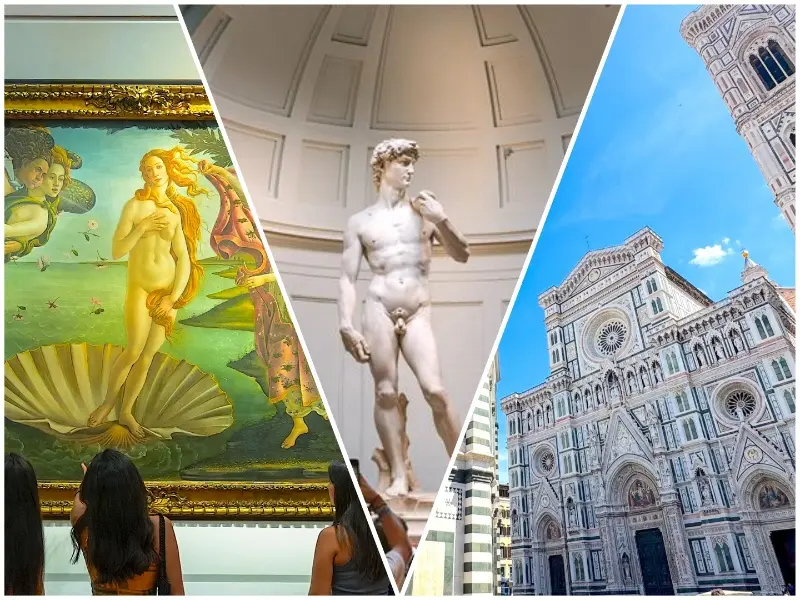
Florence in a Day Combo Tour with David and Uffizi
6 Hours • €€€
Explore Accademia Gallery, Ponte Vecchio, Florence Duomo, Uffizi Gallery, and so much more.
Book Now!Top Squares, Neighborhoods, and Gardens to See in Florence
Piazza della Repubblica
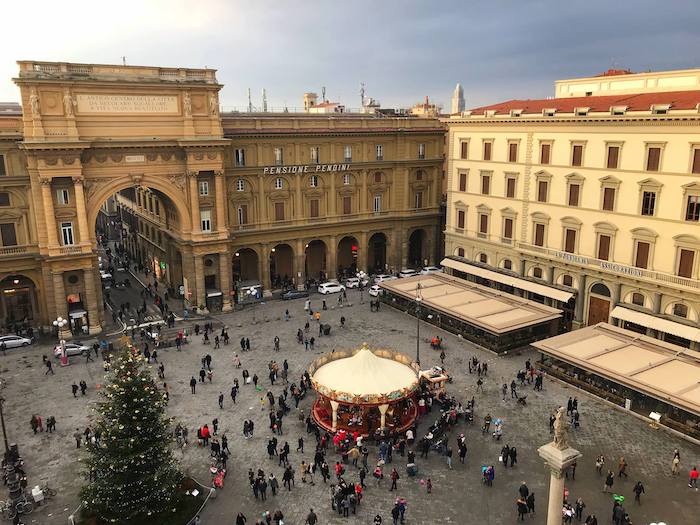
- Why Go: Historic square turned into a perfect people-watching spot.
- Best Spot: Caffè Le Giubbe Rosse for an espresso with a view.
- Admission: Free
Piazza della Repubblica has worn many faces over the centuries. In Roman times, this was Florence’s forum, the center of city life. By the Middle Ages, it had transformed into a busy market and the city’s Jewish ghetto.
When Florence briefly became Italy’s capital in the 1860s, the city cleared the old quarter to make way for this wide, open square. This upset locals, but the nail in the coffin is the plaque inaugurating the square. It translates in English to “The ancient center of the city restored from age-old squalor to new life.”
What should you do there? Go to Caffè Le Giubbe Rosse and have a slightly overpriced coffee outside!
Piazza di Santa Croce
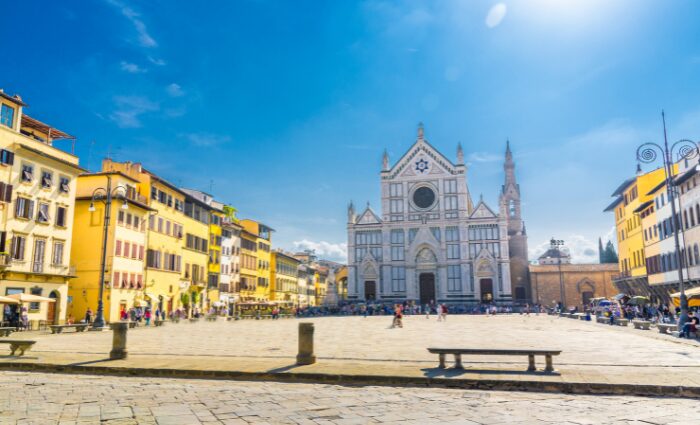
- Why Go: Resting place of Michelangelo, Galileo, and Machiavelli.
- Don’t Miss: Giotto’s frescoes and Brunelleschi’s architecture inside the basilica.
- Admission: Free to walk; church entry €8
Santa Croce is one of Florence’s most famous basilicas and the chosen burial place of none other than Michelangelo, Galileo, and Machiavelli – that says a lot. Why? The exterior of the Basilica is beautiful, but the interior is decorated by some of Italy’s greatest artists, from Giotto to Brunelleschi and Vasari. There are a few places to eat and get a coffee, and you’ll have a beautiful view.
Mercato Centrale & Il Porcellino
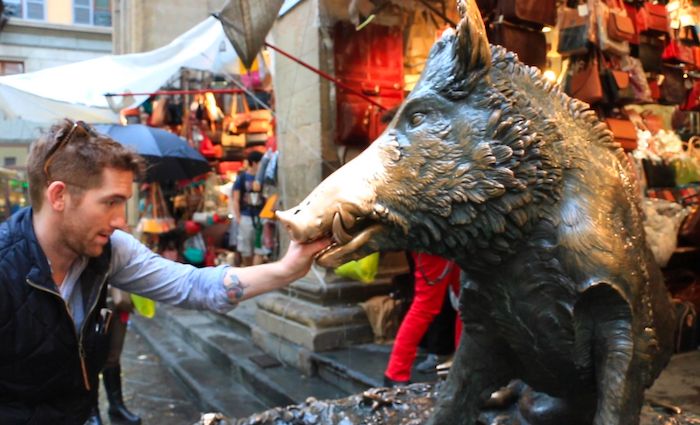
- Why Go: A true taste of Florence’s food and folklore.
- Don’t Miss: Lunch upstairs at the market and dropping a coin into Il Porcellino’s mouth for luck.
- Hours: Mercato Centrale 8 am – midnight | Il Porcellino always open
- Admission: Free
Florence’s Mercato Centrale is where the city’s flavors come alive. Downstairs, it’s all tradition: hanging prosciutto, wheels of pecorino, and produce stalls that have served locals for generations. Upstairs is more modern, with casual wine bars, pizza counters, and pasta spots perfect for a quick lunch or a late‑afternoon snack.
Nearby, the Mercato Nuovo has its own claim to fame: Il Porcellino, a bronze boar fountain with a lucky streak. Rubbing his snout is part of the ritual, but the fun is in dropping a coin into his mouth—if it falls into the grate below, you’ve secured your good fortune in Florence.
Bardini Gardens
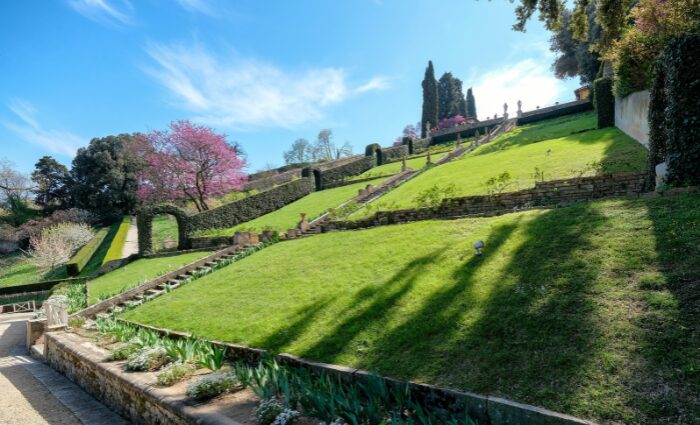
- Why Go: Escape Florence’s crowds for sweeping city views in a peaceful Renaissance garden.
- Don’t Miss: The wisteria tunnel in spring and the long staircase with city views.
- Hours: Daily 10 am – 6 pm (closed first & last Monday of the month)
- Admission: €10 adults | Free for ages 17 and under
Most visitors flock to Boboli Gardens, but just nearby, Bardini Gardens offers a quieter and more intimate escape. The garden winds uphill through shaded paths, sculptures, and terraces designed to showcase Florence from above.
The highlight is the wisteria‑covered pergola, which blooms in a burst of purple each spring. Even out of season, the gardens are a perfect spot to pause, take photos, and enjoy a slice of Florence that feels all your own.
Top Florence Hotels
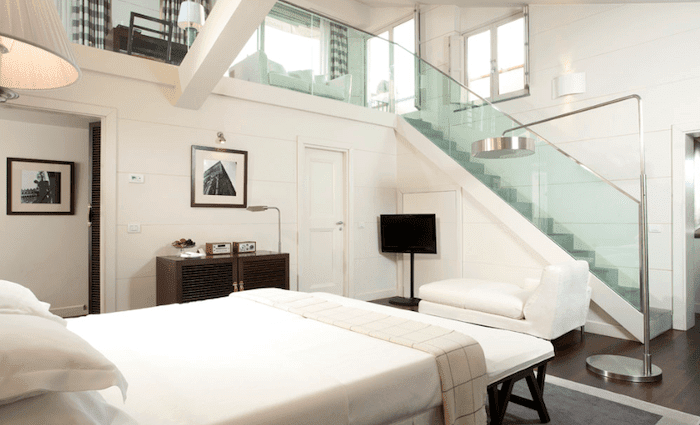
Gallery Hotel Art ⭐⭐⭐⭐
Contemporary Style • Great Location • Art-Focused
An art lover’s retreat with rotating exhibits and luxe interiors, just a short walk from the Uffizi and Florence’s best boutiques.
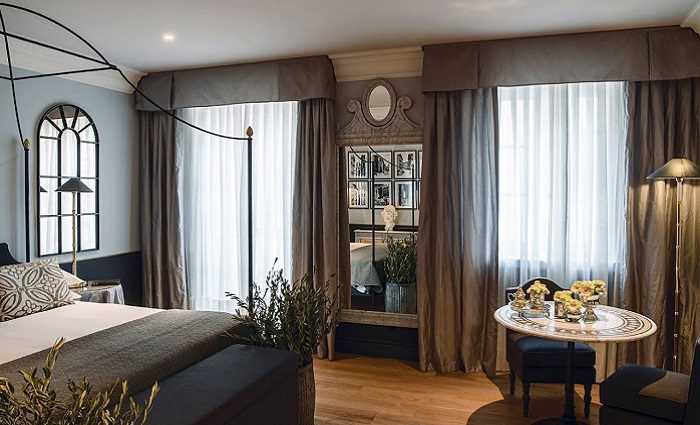
Helvetia & Bristol Firenze ⭐⭐⭐⭐⭐
Elegant Luxury • Rooftop Terrace • Dining & Spa
A favorite for special occasions, it combines old-world opulence with rooftop cocktails and a spa that’s perfect for unwinding after sightseeing.
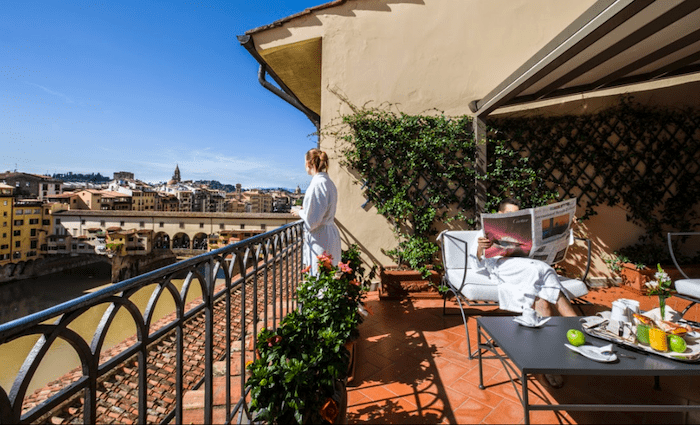
Hotel degli Orafi ⭐⭐⭐⭐
Rooftop Bar • Uffizi Access • Historic Building
Located just behind the Uffizi, this classic hotel offers elegant rooms and a rooftop bar with postcard-worthy sunset views.
Map of the Top Things to See in Florence
Use this map to easily find the top things to see in Florence as you plan your trip.
Tips for Visiting Florence’s Top Attractions
- Book popular sites in advance. Tickets for the Uffizi, Accademia, and the Duomo often sell out. Reserve online a week or more ahead.
- Go early (or late) for fewer crowds. Museums and the Duomo are quieter first thing in the morning or an hour before closing.
- Plan for walking. Florence’s historic center is compact and mostly pedestrian, but cobblestones and stair climbs are everywhere. Comfortable shoes are your best friend.
- Catch the golden hour. For the best photos of the Duomo and Ponte Vecchio, head to Piazzale Michelangelo around sunset.
Top Florence Tours
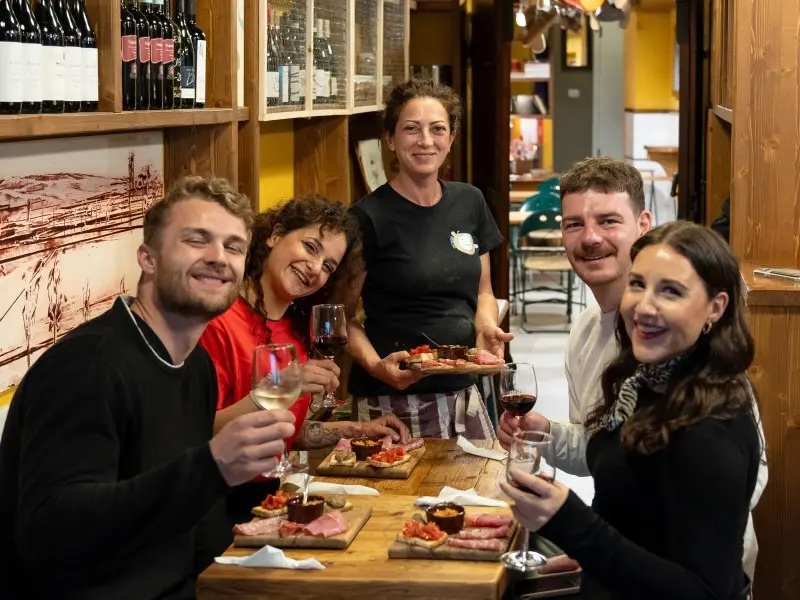
Florence Evening Food Tour with Florentine Steak and Tuscan Wine
3.5 Hours • €€
Indulge in 14 authentic tastings across 5 local restaurants for the ultimate Florentine food journey.
Book Now!
Florence Day Trip to Tuscany: Siena, San Gimignano & Winery Lunch
9 Hours | €€
Relax on this Tuscan day trip with a 3-course lunch and 6 wine tastings.
Book Now!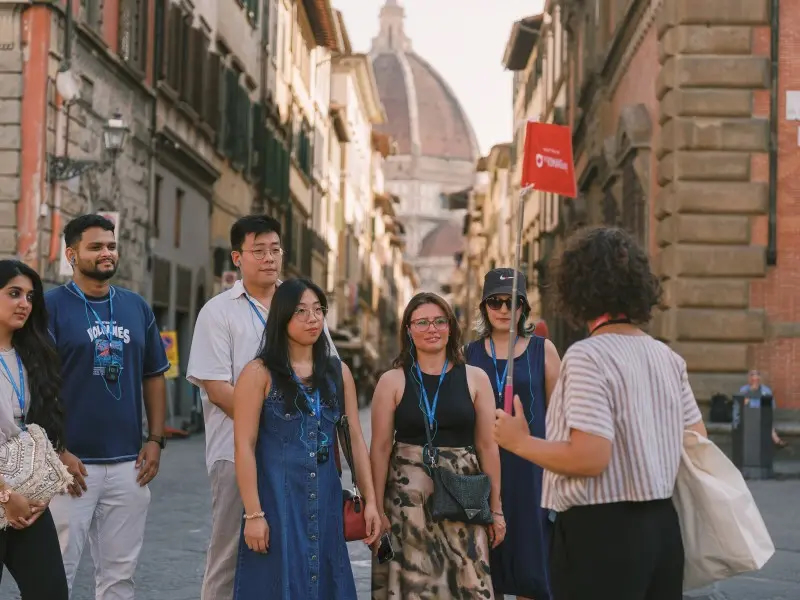
Statue of David Evening Tour
1.5 Hours • €
Skip the line to see Michelangelo’s David on a later tour of the Accademia Gallery with fewer crowds.
Book Now!Final Thoughts
Florence is a city where every corner tells a story, and exploring the top attractions in Florence takes you from the grandeur of the Duomo to the quiet cloisters of San Marco. You could spend days hopping between galleries and piazzas, or simply sit with a coffee and watch the rhythm of local life unfold. See the icons, but leave time for wandering side streets, popping into artisan shops, and crossing the Arno for hilltop views. In Florence, the magic is as much in the small moments as in the masterpieces.
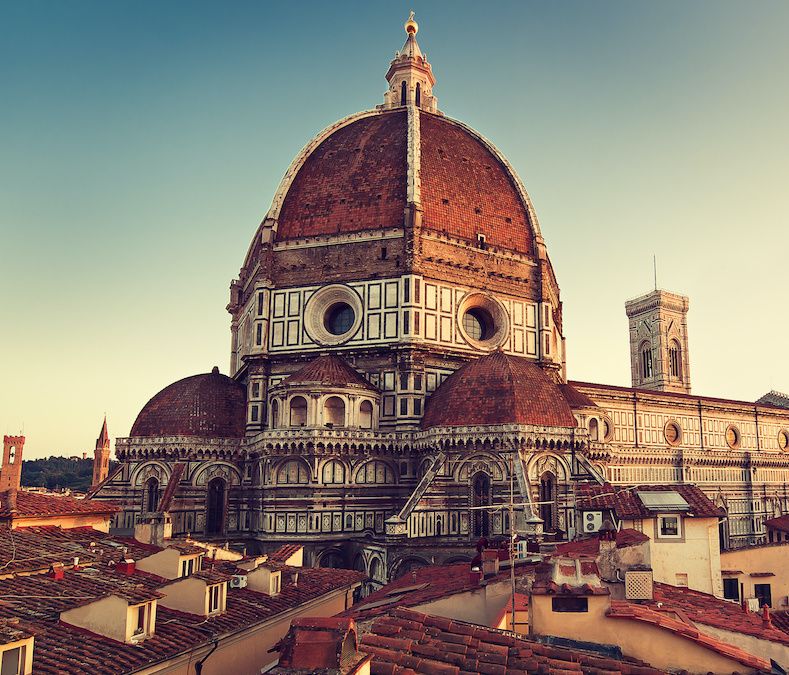
Where to Stay in Florence
A great hotel at a great price has become the norm in this the internet era. Our article explains what area are the best in Florence so you can get a great deal on the perfect location!

